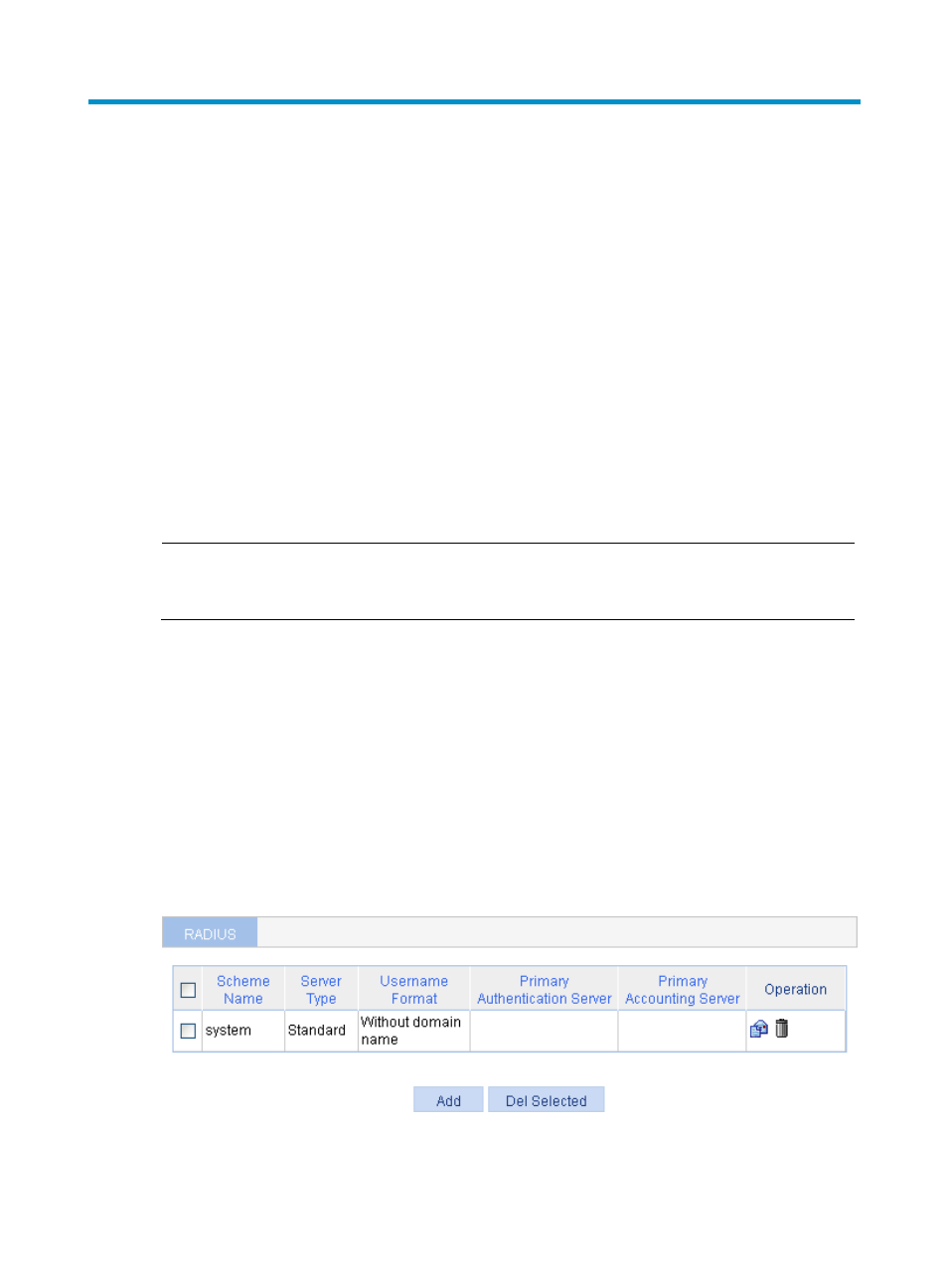Radius configuration, Radius overview, Configuring a radius scheme – H3C Technologies H3C WA3600 Series Access Points User Manual
Page 217

204
RADIUS configuration
RADIUS overview
The Remote Authentication Dial-In User Service (RADIUS) protocol is the most commonly used protocol
for implementing Authentication, Authorization, and Accounting (AAA).
RADIUS uses the client/server model. It can protect networks against unauthorized access and is often
used in network environments where both high security and remote user access are required. RADIUS
defines the packet format and message transfer mechanism, and uses UDP as the transport layer protocol
for encapsulating RADIUS packets. It uses UDP port 1812 for authentication and UDP port 1813 for
accounting.
RADIUS was originally designed for dial-in user access. With the addition of new access methods,
RADIUS has been extended to support additional access methods, for example, Ethernet and ADSL.
RADIUS provides access authentication and authorization services, and its accounting function collects
and records network resource usage information.
NOTE:
For more information about AAA and ISP, see
H3C WA Series WLAN Access Points Security
Configuration Guide.
Configuring a RADIUS scheme
A RADIUS scheme defines a set of parameters that the device uses to exchange information with the
RADIUS servers. There might be authentication servers and accounting servers, or primary servers and
secondary servers. The parameters mainly include the IP addresses of the servers, the shared keys, and
the RADIUS server type. By default, no RADIUS scheme exists.
To configure a RADIUS scheme:
1.
Select Authentication > RADIUS from the navigation tree to enter the RADIUS scheme management
page.
Figure 200 RADIUS scheme list
2.
Click Add to enter the RADIUS scheme configuration page.
